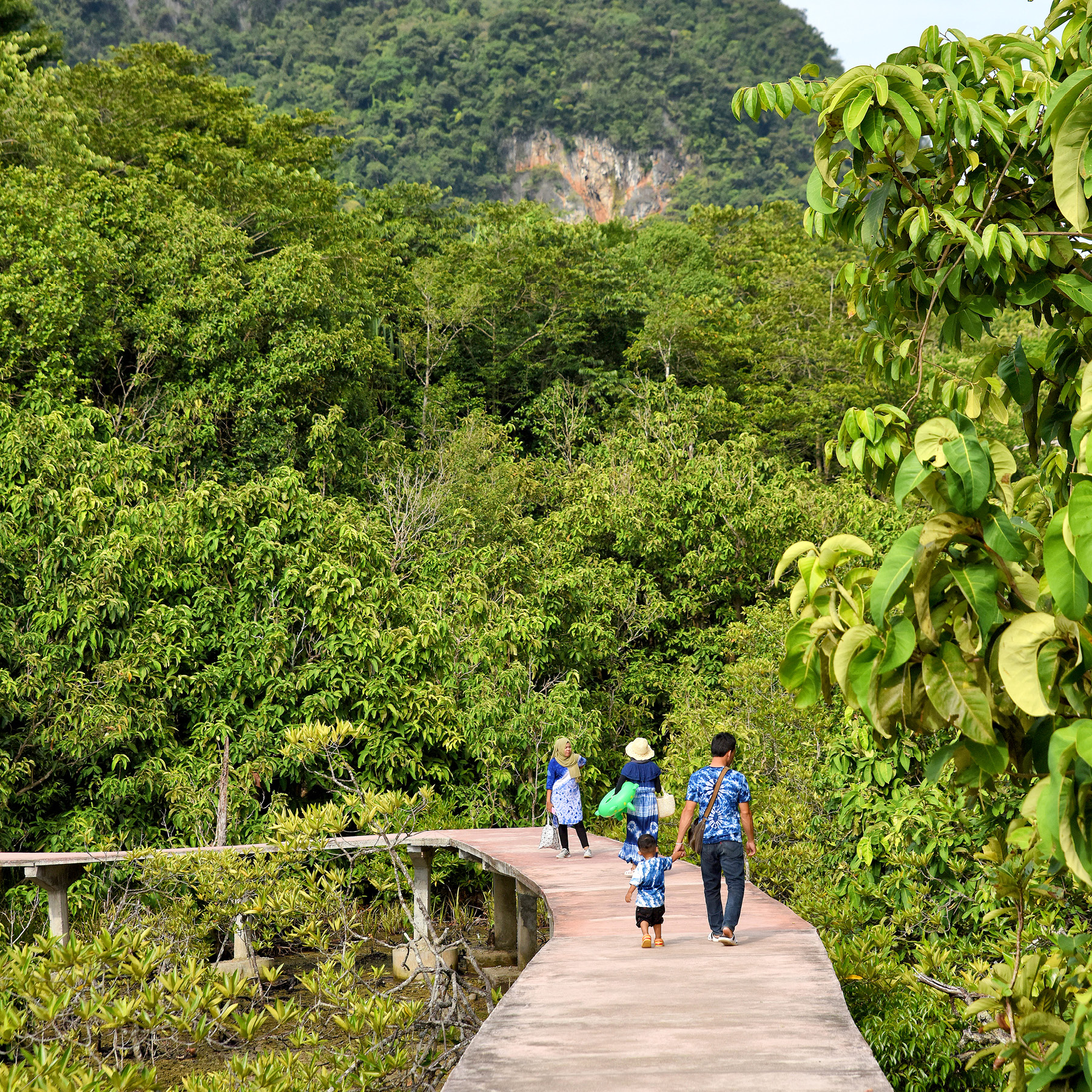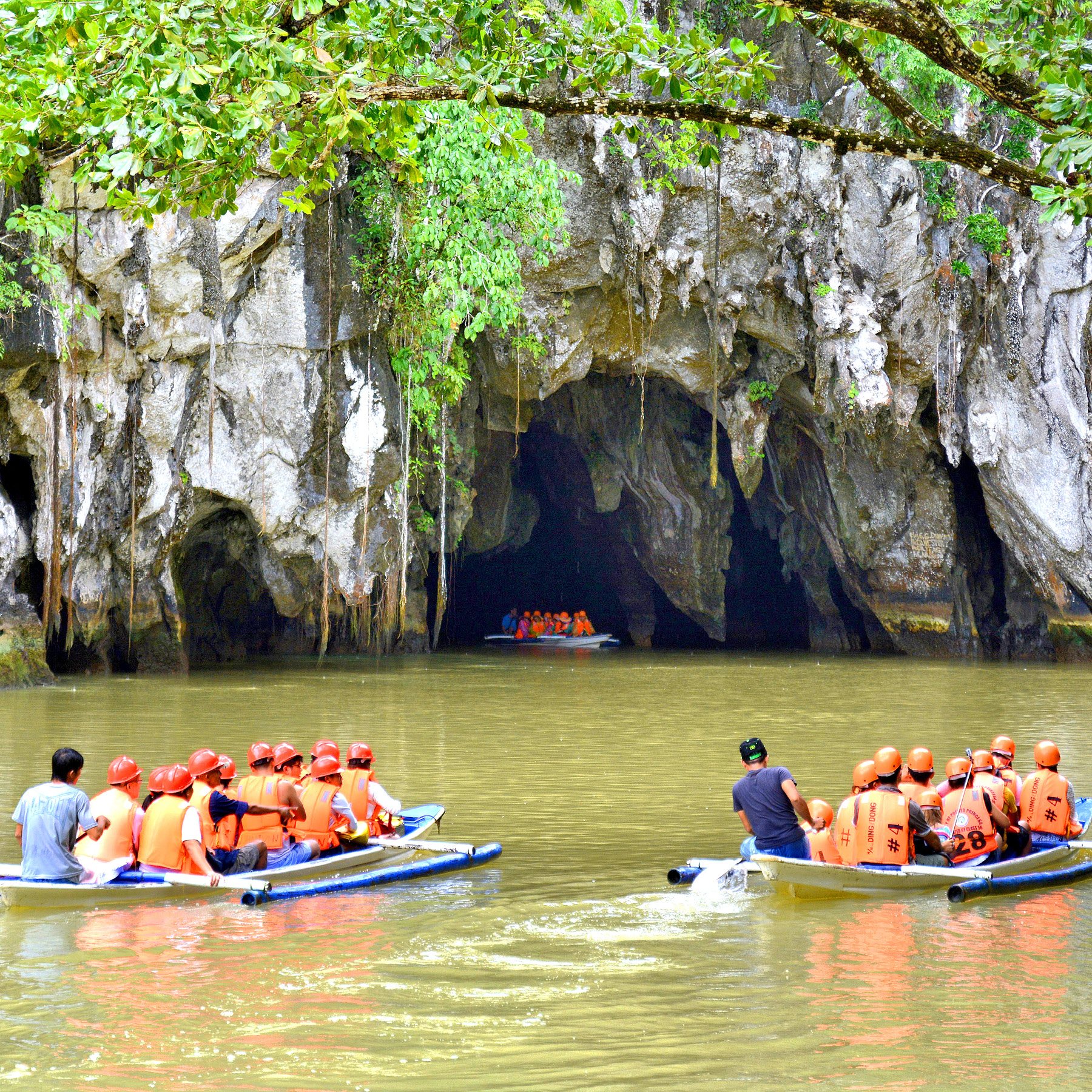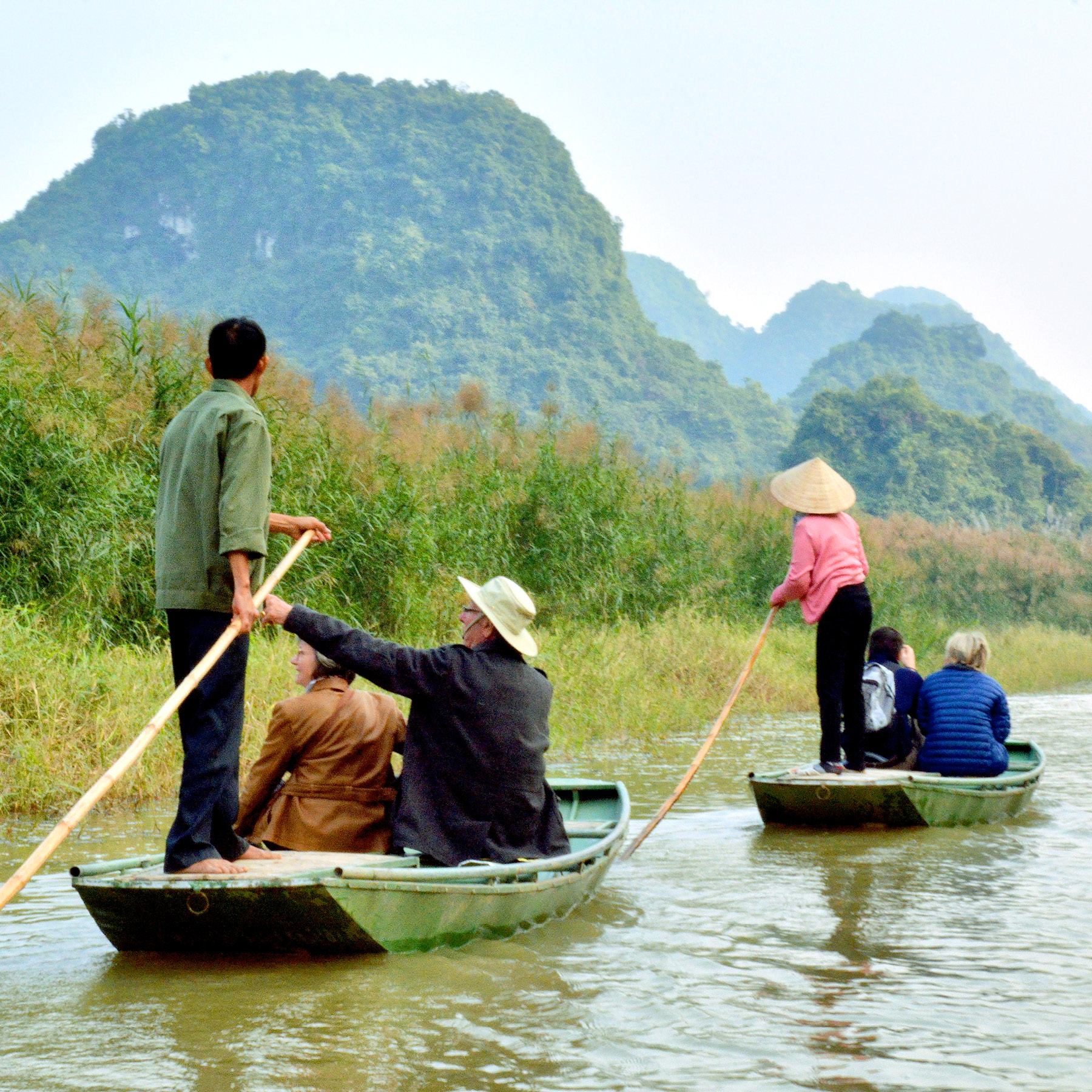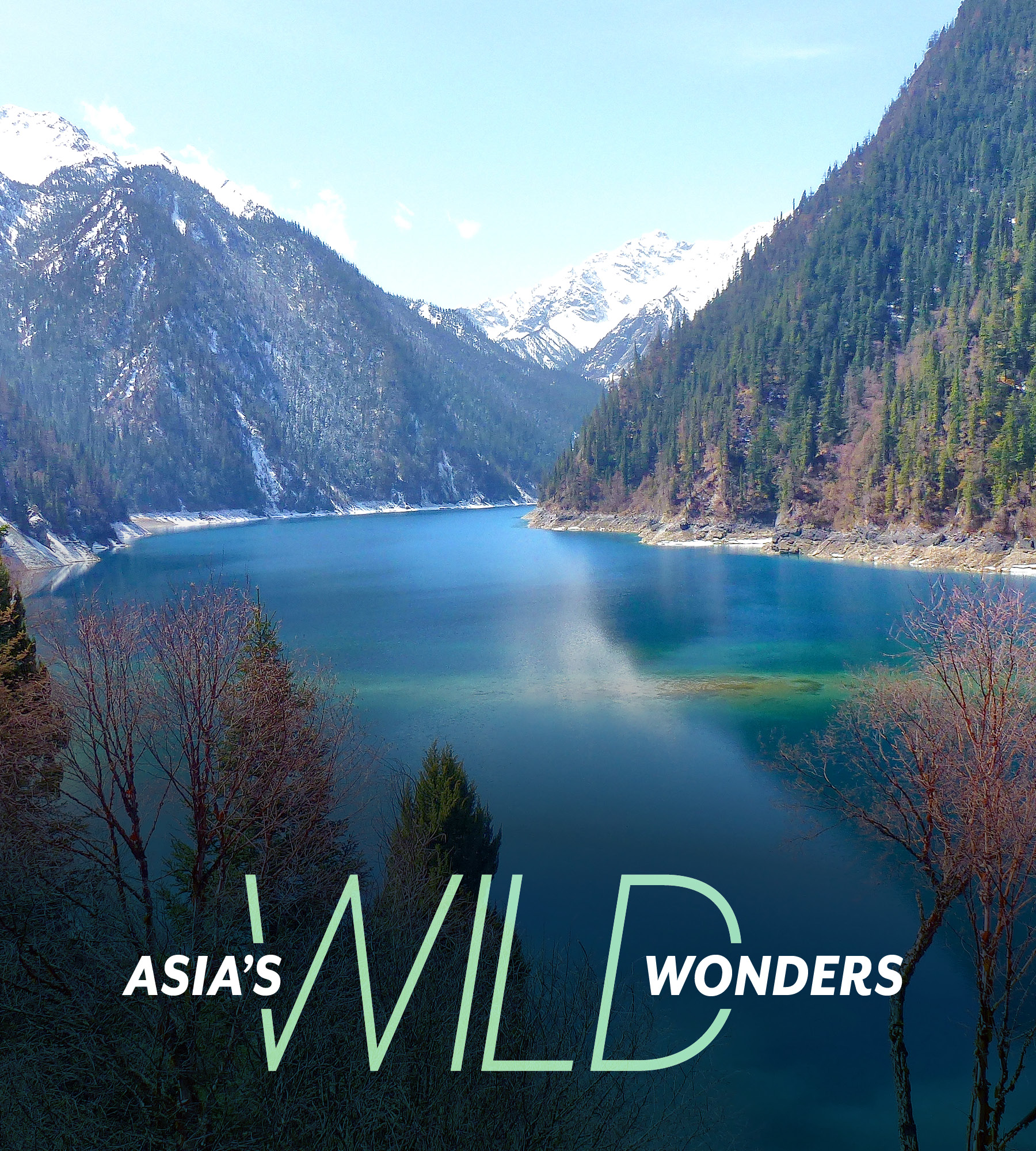Language
You can read the magazine in one of the following languages
Asia is renowned for huge cities, from skyscraper-spiked Shanghai to temple-laden Bangkok. Venture past those hulking metropolitan areas to uncover many lush destinations blessed by nature.
These jungles, valleys, peaks and beaches becalm visitors with their serenity, thrill with their scenery and fascinate via their vibrant flora and fauna, all the while slowly eroding stress and anxiety. Here are five of this continent’s finest wilderness destinations.
Ever so quickly, tourists and traffic were replaced by isolation and tranquility. Floating by was a butterfly, lapping gently was the sea, swaying hypnotically were orchids, scurrying playfully were monkeys and savoring fresh air was me. My expectations for Penang National Park were not lofty, given it’s the smallest such protected reserve in Malaysia. But they were greatly exceeded by this petite patch of rainforest in Penang’s north-east corner.
It’s just a 10-minute taxi ride from Batu Ferringhi, one of Penang’s two busy tourist districts, along with Georgetown. The latter draws visitors with its collection of heritage architecture – a distinctive blend of Chinese, Indian and British designs. Whereas Batu Ferringhi trades on its pretty beach. This two-kilometer long strip of sand is abutted by five-star resorts, seafood resorts and market stalls.
By driving just four kilometers west of that beach, tourists reach a dead-end pulsing with life. There are no roads, only walking trails through Penang National Park. Although this island’s entire eastern coast is now heavily developed, Mother Nature still reigns over a swathe of its interior and western shoreline.

Its location is so fertile that it overflows with flora and fauna. As I strolled its network of trails, with nary another human in sight, I passed many of its about 1,000 species of plants.
Some of these areas recently got even greater protection due to their designation as a UNESCO Biosphere Reserve. Collectively called Penang Hill, this region includes the wonderful Penang Botanic Garden and the adjoining national park.
Also known as Taman Negara Palau Pinang, the park covers just 25 square kilometers. Yet its location is so fertile that it overflows with flora and fauna. As I strolled its network of trails, with not another human in sight, I passed many of its about 1,000 species of plants.
Also visible, frolicking amid this lush haven, were some of its more than 200 species of wildlife. Squirrels, monitor lizards, Asian fairy bluebirds, long-tailed macaques and, swooping high above, brahminy kites. It would have been even more satisfying to see the park’s green sea turtles, which converge on Kerachut Beach to lay eggs from April to August.
But my timing was off. I’ll just have to return, I suppose. And when I do, I’ll consider making use of one of the park’s campsites and many prime fishing locations. Perhaps, if luck is with me, I may even see a rare mouse deer or pangolin basking in the peace of this tiny yet mighty park.
Holding his father’s hand, the toddler disappeared before my eyes. This pair were following a wooden boardwalk over wetlands here in Krabi when they entered a darkened tunnel. Rather than being eerie or precarious, this passage brought them inside a dense, spectacular jungle, as I soon learned by treading in their wake.
Called Tha Pom Klong Song Nam, this natural attraction is located in a quiet patch of countryside about 45-minutes drive north of Krabi’s main tourist enclave. That latter area, called Ao Nang, bulges with bars, cafes, markets, hotels, resorts and massage parlors. It also fronts a sublime beach, fringed by palm trees, flanked by limestone mountains, and offering memorable views of nearby islands.
With all this at their disposal, many tourists stay planted in Ao Nang. Those who stray tend to favor island boat tours or sunbathing and rock climbing at Railay Beach, just to its south. Few venture north from Ao Nang, although those that do are rewarded by uncrowded and unique attractions.

To showcase its beauty more widely, a 700-meter-long boardwalk was woven through this habitat.
Such as Thailand’s largest collection of prehistoric rock art, which decorates Phi Hua, a large cave concealed amid forest 20 kilometers north of Tha Pom Klong Song Nam. Those carvings reveal that this area of Krabi has been inhabited for at least 5,000 years, although all these millennia on it remains sparsely populated.
Meanwhile, only a few small homes line the narrow road to Tha Pom Klong Song Nam. In recent years, to showcase its beauty more widely, a 700-meter-long boardwalk was woven through this habitat, and for just US$3 visitors can traverse this path, and wade in its main lagoon.
As I swam there, ensconced in the jungle, I marveled at the clarity of its water. Tha Pom Klong Song Nam means two-colored water canal. That is because, at times, when it fills with water from the Andaman Sea, it takes on a deep blue color, before returning to turquoise as the sea recedes and fresh water becomes dominant.
Even an army of bats couldn’t tarnish my mood. Cruising in darkness along the Puerto Princesa Underground River was so enchanting that I didn’t shudder at their collective shrieks, nor recoil in fear when dozens of these ugly creatures flew just above my head.
Although the bats certainly did unnerve tourists sat alongside me in a row boat navigating this subterranean wonder. I wasn’t about to get rattled, having come such a long way to be here. After flying to Philippines capital Manila, I caught another plane to Puerto Princesa, the main city of Palawan, an archipelago in the country’s south-west renowned for its raw landscapes and dreamy beaches.

This is a cavern that stretches for more than eight kilometers. It hosts one of the longest subterranean rivers on the planet, which is such a natural phenomenon that it was granted UNESCO World Heritage Status.
Then I did a 90-minute minivan ride north of that urban area, and took a boat from Sabang Beach along the coast to the entrance of this hidden river, which can’t be accessed by road. Finally, I walked through an old-growth forest throbbing with wildlife to reach a large, black hole in a limestone cliff.
This is a cavern that stretches for more than eight kilometers. It hosts one of the longest subterranean rivers on the planet, which is such a natural phenomenon that it was granted UNESCO World Heritage Status. That prized title was given to the Puerto Princesa Subterranean River National Park, which covers 22,000 hectares. This park encompasses the cave and surrounding jungle, which UNESCO describes as “some of the most important forests in Asia” due to a rare level of biodiversity.

While tourists can hike trails through its dense greenery, most come for a memorable boat tour. With only headlamps and oars as tools, small groups of visitors are led along the underground river by experienced guides. A welcoming party is formed by bats.
Few countries are more famed for giant cities than China, which has five of the world’s 20 most populous metropolitan areas, including tourist hubs Shanghai (population 29.9 million) and Beijing (22.2 million). That explains why many of my friends and family are surprised when I rave about the phenomenal beauty of its many national parks. Finest of all is mountainous Jiuzhaigou.
China is roughly the same size as the United States in land area. Wilderness abounds the further west you travel, away from its crowded eastern seaboard. Despite visiting more than 60 countries, I’m yet to encounter anywhere that eclipses the startling alpine scenery of Jiuzhaigou, in central China’s Sichuan Province, some 274 kilometers north of massive Chengdu city.

My many thousands of strides exposed the magnificence of dozens of lakes and waterfalls, scattered amid coniferous forest and dramatic limestone formations. Out here, China’s megacities feel as distant as Pluto.
Snowy peaks rise above translucent lakes, dense forests and picturesque villages, making this UNESCO listed site reminiscent of the Swiss Alps. Except that, instead of steep-pitched Swiss chalets, Jiuzhaigou’s inhabitants reside in wooden Tibetan homes cloaked in polychromatic, hand-painted murals.
Inside this 72,000-hectare national park are nine villages home to about 1,000 members of China’s Tibetan and Qiang ethnic groups. Tourists can visit several of these tranquil communities while following the 50 kilometers of walkways which course through Jiuzhaigou’s three valleys.
This hike was so invigorating that I completed it two days in a row. My many thousands of strides exposed the magnificence of dozens of lakes and waterfalls, scattered amid coniferous forest and dramatic limestone formations. Out here, China’s megacities feel as distant as Pluto.
Tam Coc is like the handsome child of Jiuzhaigou and Puerto Princesa. It combines the soaring, forested peaks of that Chinese jewel with the floating-beneath-earth experience offered in Palawan. From a travel perspective, Tam Coc is sold as a mainland alternative to Ha Long Bay, the tourist-soaked UNESCO World Heritage site in the sea west of Hanoi.
Tam Coc can’t compete with the scale of Ha Long Bay, which is decorated by about 1,600 islands, many of which rise steeply from the water like limestone spikes. I do, however, believe it is equal in beauty. Located 90 kilometers south of Hanoi, in the area of Ninh Binh, Tam Coc is a deep valley of green fields pierced by a winding river and bordered on each side by mountains.

Whereas Ha Long Bay tours typically involve large vessels, often with accommodation on board, in Tam Coc you can capsize your boat just by leaning too sharply.
As our tour guide rowed my wife and I along Ngo Dong River, we were dwarfed by this natural splendor. Like single dots of paint amid a magnificent artwork. Whereas Ha Long Bay tours typically involve large vessels, often with accommodation on board, in Tam Coc you can capsize your boat just by leaning too sharply.
They must be tiny to traverse the three caves carved into peaks by the flow of the river. Called Hang Hai, Hang Ca and Hang Ba, tourists slowly bob through those caverns during round trip boat tours, which last between 90 minutes and five hours, depending on whether you stop to hike up to nearby temples. This experience is beguiling at all times of year. But it’s especially dramatic, and photogenic, when Tam Coc is draped in a golden hue by the blossoming of its rice fields, which occurs between June and August.
